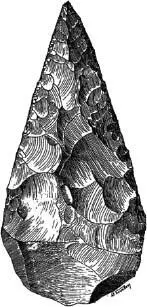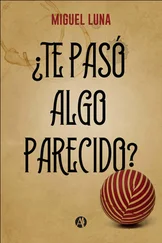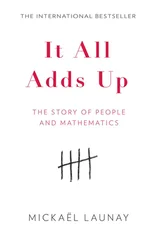Let us set out on a big adventure and see how it all adds up.
1 Contents Cover Title Page Copyright Foreword 1. Mathematicians without knowing it 2. And then there were numbers 3. Let no one ignorant of geometry enter 4. The age of theorems 5. A little method 6. Π in the sky 7. Nothing and less than nothing 8. The power of triangles 9. Into the unknown 10. In sequence 11. Imaginary worlds 12. A language for mathematics 13. The world’s alphabet 14. The infinitely small 15. Measuring the future 16. The coming of machines 17. Maths to come Epilogue To go further Footnotes Bibliography Index About the Author About the Publisher
MATHEMATICIANS WITHOUT KNOWING IT Contents Cover Title Page Copyright Foreword 1. Mathematicians without knowing it 2. And then there were numbers 3. Let no one ignorant of geometry enter 4. The age of theorems 5. A little method 6. Π in the sky 7. Nothing and less than nothing 8. The power of triangles 9. Into the unknown 10. In sequence 11. Imaginary worlds 12. A language for mathematics 13. The world’s alphabet 14. The infinitely small 15. Measuring the future 16. The coming of machines 17. Maths to come Epilogue To go further Footnotes Bibliography Index About the Author About the Publisher
Back in Paris, it is at the Louvre Museum, in the heart of the French capital, that I decide to begin our investigation. Am I going to do maths in the Louvre? That may seem incongruous. Nowadays the former royal residence, converted into a museum, seems to be the domain of painters, sculptors, archaeologists and historians rather than of mathematicians. However, it is here that we can now hark back to the first traces of those same mathematicians.
From the moment I arrive, the appearance of the great glass pyramid that has pride of place in the centre of the Napoleon Courtyard is already an invitation to geometry. But today I have an appointment with a much more ancient era. As I enter the museum the time machine wakes up. I pass by the Kings of France and travel back through the Renaissance and the Middle Ages before arriving in Antiquity. The rooms spool by, I come across a few Roman statues, Greek vases, Egyptian sarcophagi. Still a little further to go. Now I’m entering prehistory, and as I speed through the centuries I gradually need to forget everything: numbers, geometry, writing. In the beginning, no one knew anything. No one even knew that there was something to know.
The first stop is in Mesopotamia. We have travelled back ten thousand years.
Come to think of it, I could have gone back even further. I could have flown back another one-and-a-half million years, to the heart of the Palaeolithic, the Old Stone Age. Fire has not yet been tamed and Homo sapiens is only a distant prospect. Homo erectus reigns in Asia, and Homo ergaster in Africa, perhaps with other cousins as yet undiscovered. This is the age of flake stone tools. The biface has arrived.
Flint knappers are at work in a corner of the encampment. One of them picks up a virgin piece of flint, which is still just as it was when he chose it a few hours earlier. He sits down on the bare earth, places the stone on the ground, and holds it steady with one hand, while with the other hand he strikes its edge with a heavy stone. A first flake breaks off. He examines the result, turns his flint over and strikes it a second time on the other side. The first two flakes that have broken off in this way, opposite one another, leave a sharp edge on the flint. It only remains to repeat the operation along the whole of the contour. In some places the flint is too thick or too wide, and larger pieces have to be removed in order to give the final object the shape desired.
For the shape of the biface is not left to chance or to the whim of the moment. It is designed, worked, and transmitted from generation to generation. We find various different models, according to the period and to where they were produced. Some are shaped like a drop of water with a prominent point, other more rounded ones are egg-shaped, while others are more like an isosceles triangle with very slightly curved sides.

Biface from the Lower Palaeolithic
But they all have one thing in common: an axis of symmetry. Could there be a practical aspect to this geometry, or was it simply an aesthetic intention that drove our ancestors to adopt these shapes? The flint knapper’s blows had to be premeditated. He had to think about the shape before creating it, to construct an abstract image in his own mind of the object to be crafted. In other words, he had to do some mathematics.
When he finished the piece, the knapper inspected his new tool, held it up to the light at arm’s length to better scrutinize the contour, and altered a few cutting edges with two or three more sharp taps before he was finally satisfied. How did he feel at that moment? Did he already experience the tremendous exaltation of scientific creativity: of having been able to grasp and shape the outside world, through an abstract idea? It doesn’t matter; the finest hours of abstraction had not yet arrived. This is a time of pragmatism. The biface would be used to cut wood, to cut up meat, to pierce animal hides and to dig holes in the ground.
But no, we shall not travel so far back. Let us allow these ancient times and these few random interpretations to rest in peace, and let us return to what will become the true point of departure for our adventure: the Mesopotamian region in the eighth millennium BC.
All along the Fertile Crescent, in a zone that roughly corresponds to the area now known as Iraq, the Neolithic revolution was under way. People had been settling there for some time. In the northern plateaux, sedentarization was a success story. The region was the laboratory for all the very latest innovations. The mudbrick houses formed the first villages, and the bravest builders were even at that time adding a storey. Agriculture was a state-of-the-art technology. The temperate climate meant that the land could be cultivated without artificial irrigation. Animals and plants were gradually being domesticated. Pottery was on the verge of emerging.
Speaking of which, let’s talk about pottery. For while many testimonies to these periods have disappeared, irreparably lost in the mists of time, nevertheless archaeologists continue to gather thousands of artefacts: pots, vases, jars, plates, bowls, etc. The display cabinets around me are full of them. The earliest date from 9,000 years ago, and from room to room, like the pebbles of Hop-o’-My-Thumb, they guide us through the centuries. They come in all shapes and sizes and are variously decorated, sculpted, painted or engraved. Some have feet, others have handles. Some are intact, cracked, broken, or have been reconstituted. In some cases, only a few sparse fragments remain.
Ceramics was the first art to use fire – well before bronze, iron or glass. Artisan potters were able to use clay, that paste of malleable rock and soil material which can be harvested in abundance in these humid regions, to fashion objects as they wished. When they were satisfied with the shape, they had only to let the objects dry for a few days, before cooking them in a great fire so that they solidified. This technique had already been known for a long time. Twenty thousand years earlier people were already producing small statuettes. But the idea of producing utensils out of clay had only arisen recently with sedentarization. The new way of life required a means of storage, so pots were produced in bulk.
These earthenware receptacles rapidly came to be indispensable to everyday life and also necessary for the collective organization of the village. If there was going to be washing up to do, it might as well be beautiful – soon, pots were being decorated. Here again, there were several approaches. Some potters imprinted their patterns in the clay while it was still fresh by using a shell or a twig, before baking the pot. Some did the baking first before engraving their decorations using stone tools. Others preferred to paint on the surface with the help of natural pigments.
Читать дальше













